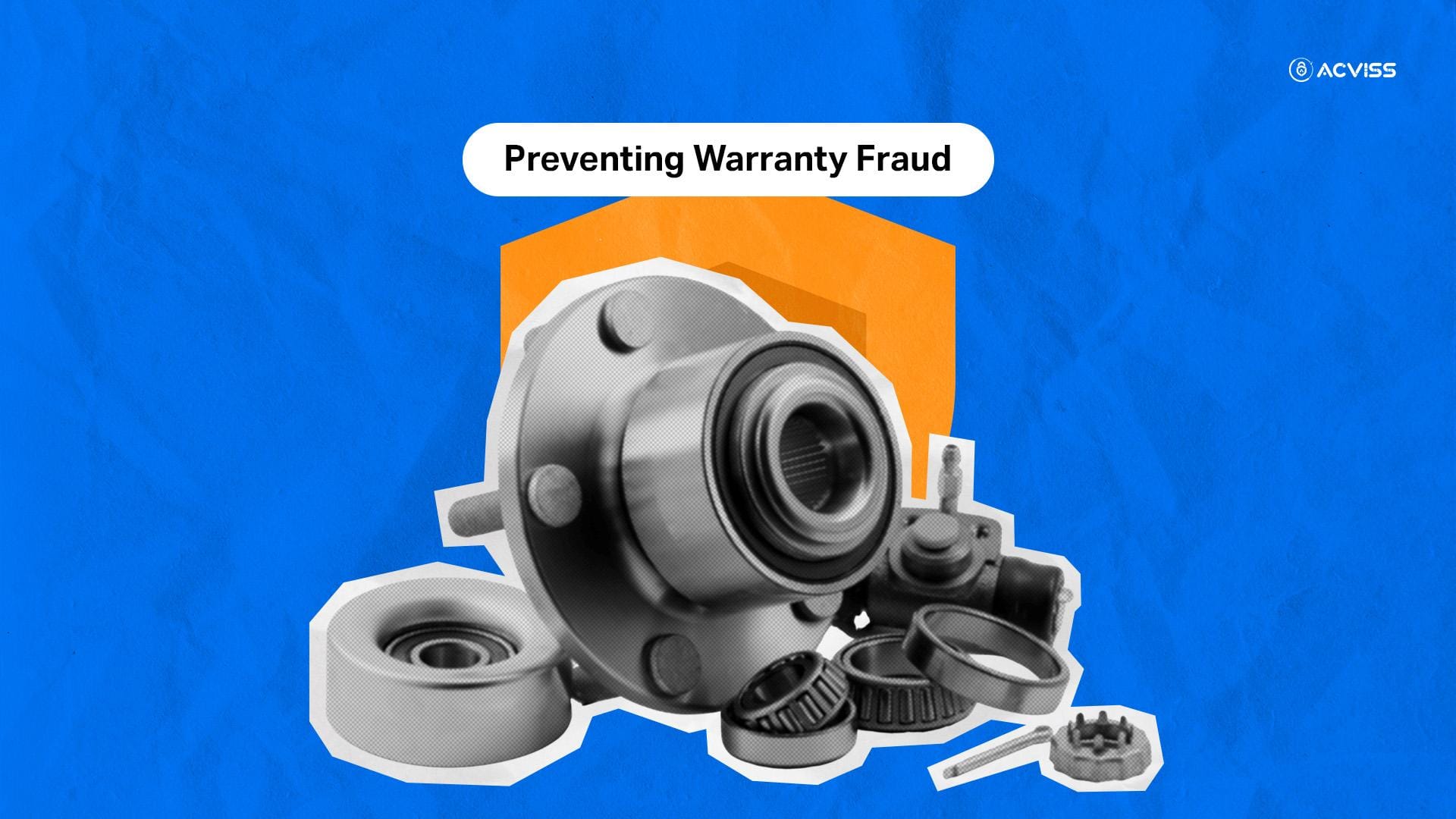Preventing Warranty Fraud in Auto Parts with Parent-Child Traceability

Warranty fraud isn’t a new menace, but in the era of sophisticated supply chains and high consumer expectations, it has evolved into a costly and reputation-damaging issue, especially for the automotive industry.
Every year, manufacturers lose billions to warranty fraud, often without realising the full extent of the problem. What starts as a few invalid claims can snowball into a major revenue leak, not to mention the erosion of customer trust.
In this blog, we’ll explore how automotive brands can deploy advanced track and trace technologies, specifically parent-child traceability, to secure their warranty systems.
The Hidden Cost of Warranty Fraud in Automotive Parts
Auto parts manufacturers and OEMs face a constant challenge, distinguishing genuine warranty claims from fraudulent ones. While the terms of warranty are clearly defined, the loopholes often lie in:
- Duplicate or reused warranty labels
- Fake parts being returned as genuine
- Unauthorised dealers offering spurious replacements
- End customers misusing service windows
These activities not only result in financial loss but also weaken the brand’s credibility. When a counterfeit part causes failure, the consumer blames the brand, not the fraudster.
This is where product traceability and granular tracking play a crucial role.
What Is Parent-Child Traceability?

Parent-child traceability is a traceability method where individual components ("children") are linked to a larger product unit ("parent"). In the context of automotive parts:
- A parent could be an entire engine or vehicle assembly.
- Children might include spark plugs, filters, ECUs, or even bolts with unique serial identifiers.
Each child component is tagged and digitally mapped to its parent unit in a central database. This linkage provides a transparent chain of custody, from manufacturing to installation to warranty servicing.
Why it matters: When a warranty claim is made, the manufacturer can immediately verify whether the part in question was originally shipped with the vehicle, when it was installed, and if it falls within the coverage window.
Why Traditional Systems Aren’t Enough
Many brands still rely on manual or semi-digital systems to track parts. Serial numbers, barcodes, and paper-based warranty cards, while useful, are vulnerable to:
- Tampering or replication
- Manual errors
- Data loss or misalignment
They also lack real-time integration across supply chain partners. This siloed visibility makes it easy for counterfeiters and fraudsters to exploit the cracks.
What automotive brands need today is an integrated, secure, and verifiable product verification mechanism that scales.
Enter Digital Product Authentication with Acviss Origin

Acviss’s Origin is a blockchain-backed product authentication and track and trace platform designed to bring full-spectrum IP protection and anti-counterfeiting capabilities to modern supply chains.
With Origin, every component is assigned a unique digital identity, which can’t be cloned, modified, or tampered with. Here's how it works in the context of warranty fraud prevention:
1. Unique Tagging at Source
Each child component, say a brake pad or alternator, is tagged with a non-replicable digital code and registered into Origin’s blockchain-based ledger.
2. Parent-Child Linking
These components are then digitally linked to the final assembly or vehicle using the parent-child hierarchy. Once installed, the entire assembly is mapped and authenticated.
3. Real-Time Supply Chain Visibility
Origin offers visibility at every handoff, from manufacturer to OEM, distributor, service centre, and end user. Any mismatch, diversion, or fake insertion can be flagged immediately.
4. Instant Warranty Validation
When a customer raises a warranty claim, service centres or support teams can verify the product’s legitimacy in seconds. If the part doesn’t match the original parent mapping or has already been claimed elsewhere, it’s flagged.
Real-World Impact of Parent-Child Traceability

Let’s break down the benefits:
1. Eliminates Duplicate Claims
Every part has a single-use digital fingerprint. Once used, it cannot be reused to claim warranty again.
2. Protects Against Counterfeits
By using brand authentication through Origin, parts that aren’t officially tagged are immediately identified as fake.
3. Strengthens Brand Protection
The system ensures that only authorised parts and partners are part of your service network, protecting your trademark and reducing legal risks.
4. Improves Customer Trust
Customers experience faster and more transparent warranty processing, enhancing loyalty and perception.
5. Enables Regulatory Compliance
Parent-child traceability helps fulfil increasingly stringent IP protection and documentation requirements globally.
A Paradigm Shift in Supply Chain Management
The automotive supply chain is no longer linear or predictable. Global sourcing, multiple assembly units, and third-party logistics make it more vulnerable to leakage.
That’s why track and trace solutions like Acviss Origin are no longer a “nice to have”; they’re critical infrastructure for any brand serious about brand verification, product authentication, and warranty integrity.
When traceability is built into the DNA of your supply chain, fraud has nowhere to hide.
Trust is Built on Proof
In an industry where safety, reliability, and trust are paramount, preventing warranty fraud is not just a financial concern; it’s a brand mandate.
By adopting parent-child traceability and secure product verification platforms like Acviss Origin, automotive brands can finally turn the tables on fraudsters. Not just by reacting to fraud, but by designing it out of the system entirely.
If you're ready to build a resilient, fraud-proof, and future-ready supply chain, let Acviss Origin show you the way. Request a demo today
